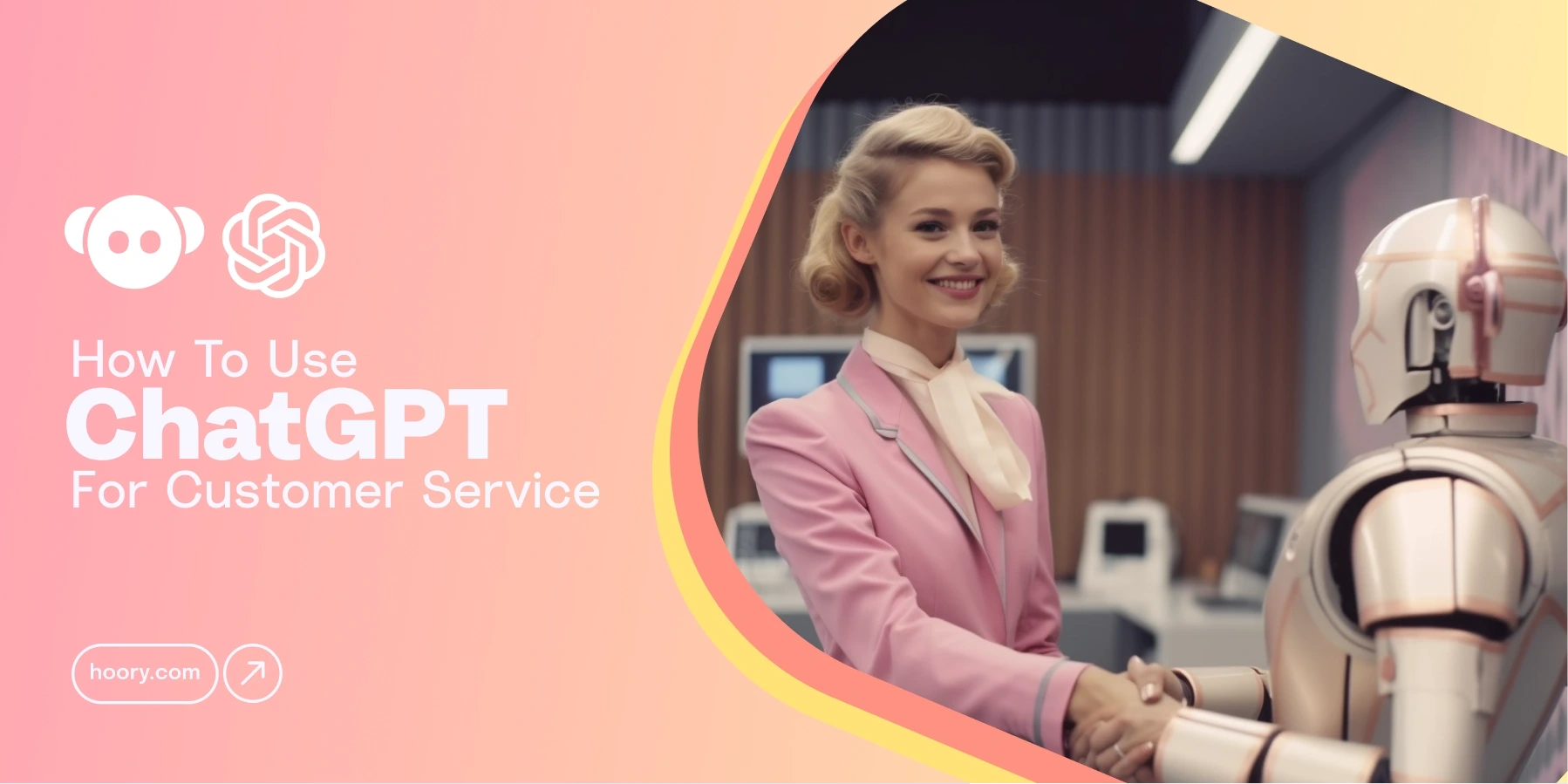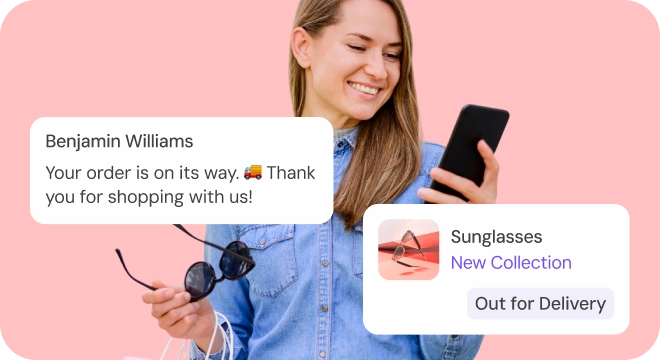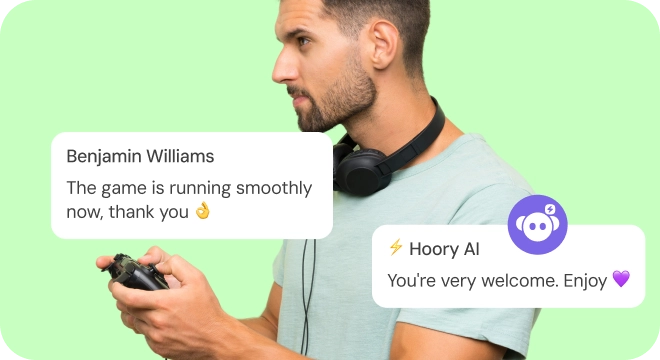How To Use The Power of ChatGPT for Customer Service
• Customer Support
• FastBank

OpenAI’s GPT-3.5 is a powerful new technology that is redefining the way we look at artificial intelligence. It’s no surprise that OpenAI took the world by storm since the very first day of its appearance.
It was released to the public in December of 2022, and since then, it has reached 100 million monthly active users. ChatGPT is the fastest-growing Internet application in history. Utilizing the latest advancements in machine learning and natural language processing, ChatGPT revolutionizes the way people communicate with virtual agents.
It is used not only by individuals but also by many businesses and organizations around the world. These companies use the GPT technology to improve their operations and provide a better user experience for their customer communities.
In this article, we’ll examine the ins and outs of the GPT technology, its potential applications, advantages, disadvantages, and how it can be implemented in customer support teams to resolve repetitive customer queries at scale!
What is ChatGPT?
ChatGPT is an AI-powered tool that processes natural language and allows people to get into human-like conversations with a chatbot. People use ChatGPT for many purposes: composing emails, articles, generating software coding, to name just a few.
The ChatGPT application was created by a company called OpenAI. Its basis is the 3.5 edition of the natural language processing project - GPT. If you have a premium subscription, then you can use GPT-4.
ChatGPT utilizes natural language processing (NLP) and machine learning algorithms to process user input and generate a response. The technology begins by extracting the key elements from the user input, such as the speaker's intent, entities, and the overall context of the conversation.
The application then uses its algorithms to generate a response that is tailored to the user's needs. The technology is also able to learn from its interactions. The GPT-4 language model sorts through a vast amount of previously collected internet dataset and builds the knowledge base system behind ChatGPT to continue communicating with users.
How Do Businesses Use ChatGPT?
Hundreds of businesses across the globe have already implemented ChatGPT in their work processes in some way or another. The fields of ChatGPT implementation are varied, ranging from customer support automation, user research and analysis, content creation, sales, marketing, and a lot more.
Businesses integrate the GPT language models to improve live chat customer service, provide faster responses to customer inquiries, and automate mundane tasks. The technology can be used to handle customer service requests and provide customers with instant answers to their questions. It can also be used to automate tedious tasks, such as data entry, order processing or email writing, freeing up human resources for more important tasks.
Additionally, ChatGPT can be used to create more engaging user experiences, as it can effectively mimic human conversation. All of these factors combined make ChatGPT a valuable tool for businesses.
Can ChatGPT Be Used for Customer Service?
Of course, it can! As business owners strive to provide the best customer service possible, the use of the GPT-4 technology for business purposes is becoming increasingly popular. Rumor has it that GPT is going to be the future of customer service.
Considering the fact that about 40% of customer queries are repeating, businesses integrate the GPT-4 language model API to provide AI customer service. It is a smart solution as repetitive customer queries can be a huge burden for customer service teams.
They take up a lot of time and resources, resulting in a lack of focus on more complex customer issues and longer response times.
Replying to customers
Replying to your customer’s questions and comments in a consistent manner is rather an overwhelming task. Ask any customer support agent, and it won’t take a second for them to bring up reasons why they would happily skim through the incoming customer queries.
The constant interactions with customers can drive them to exhaustion and mental blocks, especially when the customer’s intent is not a very positive one.
Most often people turn to customer support with their complaints and negative feedback or simply leave such not-so-nice thoughts in emails and comments.
Now, imagine having a business that has accumulated millions of customers over the years. Handling the possible questions and concerns of such a massive community of users is a huge challenge.
ChatGPT turns out to be a great help with this issue. By using information from the client’s website, it resolves almost half of the incoming queries with repetitive context. When it comes to responding to unfavorable comments, emails, or reviews, ChatGPT is outstanding. AI can predict the proper response or at least provide one that is somewhat near to what you are looking for.
Check out the output that OpenAI’s GPT-4 playground gave as a response to a customer’s negative review.
Content generation for customers and prospects
As businesses increasingly rely on digital channels to provide omnichannel support for customers and prospects, creating content that is tailored to their needs becomes more and more essential. With ChatGPT, companies generate content quickly, accurately, and cost-effectively.
Content generated with ChatGPT can be used for marketing, customer service, lead generation, and more. ChatGPT now is one of the marketing tech stack main tools.
Nonetheless, relying the full content creation to ChatGPT would not be a smart move. Instead, combining a team of creatives with such a useful AI tool would do some magic for your business.
Here’s a list of possible content pieces that ChatGPT can help you with:
-
Sales letters and emails
-
Product descriptions and brochures
-
Website content
-
Blog posts
-
Newsletters
-
Social media posts
-
White papers
-
Case studies
-
Press releases
-
Video scripts
Translations
The GPT-4 language model provides a new and innovative way to translate conversations in real-time. The translation process is powered by AI chatbot technology, allowing users to communicate with each other in different languages.
ChatGPT can interpret the user’s text and then generate a response in the desired language. People from different countries and cultures can now communicate with each other without the need for a human translator. The list of languages that ChatGPT is currently supporting includes 90+ languages.
Best Tips to Use ChatGPT Effectively
To use ChatGPT to its full potential, it’s highly advisable to learn some of its basic commands and question formulations that will help you generate the exact type of content you need. We’ve compiled some examples of the most commonly used commands to help you create top-notch pieces of content.
-
The universal command - the syntax looks like this: write a [length] [type] on [topic] in the style of [style]. For instance, “write a 1500-word article about the importance of customer service automation in the style of George Orwell”.
-
Rephrasing the text - the syntax looks like this: rephrase this text in the style of [style]: “[insert text]”.
-
Listing keyword - the syntax looks like this: give me a list of keywords associated with “[subject]”.
-
Business analysis - the syntax can look like this: “analyze and compare the state of [industry name] between 2020 and 2023“.
-
Web development - for example, “debug the following code: <post the code below>“.
-
Musical projects - for instance, write the lyrics to a song titled: [Title of the song].
Of course, depending on the topic of the question that you ask ChatGPT, your command will differ. Most importantly, you need to make sure that your questions match the following criteria:
-
Ask open-ended questions: Asking open-ended questions can help you get more detailed, helpful responses.
-
Use keywords: Using specific keywords can help the GPT language model understand what you are looking for and provide more accurate answers.
-
Follow up questions: If you don’t get the answer you are looking for, follow up with another question.
-
Be precise: Provide as much detail as you can when asking a question to increase the accuracy of the response.
-
Be patient: ChatGPT is a learning system, so it may take some time for it to get used to your language and provide the best response.
Pros and Cons of Using OpenAI ChatGPT in Customer Service
By allowing people to have conversations with machines, GPT-4 brings forward a huge potential in customer service automation. However, with all the advantages that it provides for customer support, it also comes with some drawbacks.
To help you decide if ChatGPT is the right tool for your business, we’ve listed the key pros and cons of using it in customer support.
Let’s start with the positives.
-
Integrating the GPT-4 API can help businesses provide fast and efficient customer service. It eliminates the need to keep a large customer support team and frees up a lot of time for your agents to handle tasks that are more tricky and have a higher priority.
-
With GPT-4, you can provide round-the-clock availability and consistency in response time and quality of customer queries.
-
GPT-4 provides a more personalized experience by using natural language processing. The end-result will be a tangible increase in customer satisfaction and loyalty.
Now let’s get to the flip side:
-
While ChatGPT can provide a more personalized experience, it can also lack the human touch. Some customers may find the automated responses impersonal or too generic.
-
GPT-4 may not be able to provide the same level of detailed information as a human customer service agent.
-
ChatGPT may struggle to answer case-specific questions, such as: “Why is my account blocked?”, “Why is my delivery package damaged?”. To handle similar queries, a human agent should be assigned to the task.
-
The GPT-4 technology is limited in its understanding of customer needs. It may not be able to provide in-depth answers to customer questions or anticipate customer needs.
-
You may catch ChatGPT red-handed providing outdated information. It can lose context if the topic is changed too drastically.
How Does Hoory Use GPT-3.5 for Customer Support?
To improve the customer service automation process and be in sync with technological advancements, Hoory has integrated the GPT-3.5 large language model. It is an unprecedented advantage over our competitors as we will help our users provide even more enhanced and efficient customer service. Integrating GPT-3.5 on Hoory suggests a higher level of accuracy and efficiency from your AI-powered assistant. Your users will now receive answers to their general questions in a conversational manner.
Here's how the process works:
Hoory has a Dialogue feature that allows people to train their AI assistant. Each of these dialogues contains a minimum of 4 variations of possible questions you may receive from your users and up to 3 answers that will be sent in response to all the variations. In other words, you train and adapt your AI assistant to send pre-set replies to expected user queries.
When your AI assistant is asked a question, it first scans the training list to find a relevant answer. If you don't have training for that question, Hoory tries to find a response from the knowledge base of your website.
If your AI assistant does find the necessary information there, it uses the GPT-3.5 language model to make it more conversational, and only after that, it replies to that query. Otherwise, Hoory relies on the GPT-3.5 language model database for a general answer.
If the question is too specific and Hoory doesn't find an answer in the training list or the knowledge base of your website, it offers to contact customer service and get specialized assistance.
Thus, the combined efforts of Hoory and GPT-3.5 help you resolve almost 100% of non-personalized customer queries, providing case-specific information to your customers. Additionally, you reduce the workload of your customer support team and cut the average waiting time almost to zero.
Last Words
The GPT-4 technology has been a game-changer for the customer service industry. It has become an invaluable asset for boosting the effectiveness of customer support service.
With its powerful AI-driven capabilities, ChatGPT can effectively respond to customer inquiries and provide personalized and accurate customer service.
In retrospect, this article covered the topics of ChatGPT’s mission, ways of implementation in customer service, pros, cons, useful commands, and many other crucial points that you need to consider when dealing with this AI technology shaking the world to its core.
By the way, the GPT-4 technology was released just a couple days ago. They have rolled it out to all kinds of users, including API ones.
As stated, GPT-4 can solve problems with greater accuracy due to its broader knowledge base system and advanced reasoning capabilities.
Besides, it works not only with texts but with images, as well. You can now attach an image to your question, and it will automatically connect the content of the picture with your question and provide a full answer to it.
FAQ
What does GPT stand for in ChatGPT?
The abbreviation GPT stands for Generative Pre-trained Transformer. It is a deep learning-based language model designed to comprehend and generate human-like language.
What is ChatGPT based on?
ChatGPT is based on a large-scale language model called GPT-4 (Generative Pre-trained Transformer 4). It is an automated system that is capable of understanding and responding to natural language inputs. ChatGPT is trained on a dataset of millions of web pages, books, and other text sources.
How does ChatGPT differ from common chatbots?
ChatGPT is an AI-based chatbot that uses natural language processing and machine learning to generate conversational responses. Unlike traditional chatbots, which are programmed with a fixed set of rules and responses, ChatGPT is able to generate more natural, human-like responses based on the context of the conversation. This allows it to understand more complex conversations and better respond to user inputs.
Do businesses use ChatGPT-4 right now?
Although ChatGPT-4 has just been released, businesses rush to use it in their customer support systems and content generation processes. With the help of ChatGPT, businesses enhance user experience and accelerate the implementation of day-to-day tasks.

























